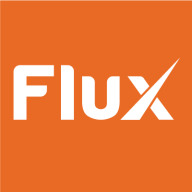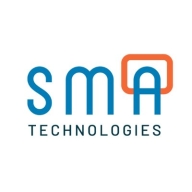

Flux and VisualCron are competing products in the automation software space. VisualCron appears to have the upper hand due to its comprehensive feature set, providing a valuable investment opportunity.
Features: Flux provides sophisticated workflow automation tools, integration with various applications, and high customization potential. VisualCron is known for extensive task automation capabilities, cross-platform compatibility, and scheduling flexibility. The ability of VisualCron to adapt across different platforms stands out as an advantage.
Ease of Deployment and Customer Service: Flux offers straightforward deployment and responsive support channels, contributing to efficient operations. VisualCron presents a user-friendly deployment process with robust community support and detailed documentation, which speeds up the resolution of deployment queries due to its extensive resources.
Pricing and ROI: Flux offers a lower initial setup cost, attracting budget-conscious buyers, and enhances ROI by reducing operational costs through task automation. VisualCron, though having a higher upfront cost, promises significant ROI with advanced features and wide compatibility, increasing productivity and justifying the expense.
| Product | Market Share (%) |
|---|---|
| VisualCron | 1.2% |
| Flux | 0.2% |
| Other | 98.6% |

| Company Size | Count |
|---|---|
| Small Business | 5 |
| Midsize Enterprise | 1 |
| Large Enterprise | 5 |
Flux is a technology-driven tool designed to optimize workflow management, offering an agile approach and seamless integration to enhance project execution for businesses.
Designed for teams aiming to streamline processes, Flux provides robust features supporting efficient data flow and task management. Its architecture enables users to track projects, automate tasks, and improve communication among team members. The platform's comprehensive analytics offer insights, driving effective decision-making and boosting productivity.
What are the key features of Flux?Flux finds applications across industries such as finance, healthcare, and IT, where workflow automation is crucial. By tailoring automation and analytics, companies achieve marked improvements in operational efficiency, adapting processes for specific industry demands and ensuring compliance with sector standards.
VisualCron offers task automation through a visual interface, eliminating the need for programming skills. With capabilities like alerting and variable usage, users benefit from integration with databases, timely task execution, and cross-platform operations.
VisualCron empowers users by simplifying complex workflows. It allows seamless task automation through features like interactive scheduling and role-based operations. Users appreciate its integration capabilities, replacing multiple tools with a comprehensive automation solution. The support system ensures quick assistance, making it a reliable choice for workflow visualization and task execution. However, areas like error handling and interface design require enhancements for improved user experience.
What are the key features of VisualCron?Organizations leverage VisualCron in industries like finance and logistics to automate tasks such as encryption and secure file transfers. It's also integral in managing data operations, facilitating communications between systems, and executing SQL jobs, enhancing operational efficiency across sectors.
We monitor all Workload Automation reviews to prevent fraudulent reviews and keep review quality high. We do not post reviews by company employees or direct competitors. We validate each review for authenticity via cross-reference with LinkedIn, and personal follow-up with the reviewer when necessary.